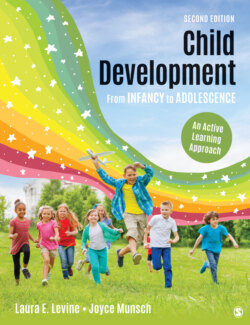Читать книгу Child Development From Infancy to Adolescence - Laura E. Levine - Страница 62
На сайте Литреса книга снята с продажи.
Stability Versus Change
ОглавлениеHow much do we change during the process of development? As we grow, develop, and mature, are we basically the same people we were at earlier ages, or do we reinvent ourselves along the way? We find evidence of both stability and change as we look at development. For instance, characteristics such as anxiety, depression (Lubke et al., 2016; Nivard et al., 2015), shyness (Karevold, Ystrom, Coplan, Sanson, & Mathiesen, 2012), and aggressiveness (Dennissen, Asendorpf, & van Aken, 2008) tend to be relatively stable over time. However, what does change is the specific way in which these characteristics are expressed. For example, young children hit, kick, or throw things when they are angry, but school-age children are more likely to express their aggression through teasing, taunting, and name-calling (Liu, Lewis, & Evans, 2013), and adolescents attack each other through social means (for example, spreading rumors or excluding others from social activities; Wang, Iannotti, & Luk, 2012).
As another example of stability and change in development, we know that self-esteem goes through predictable changes as children move through childhood and adolescence. As you will learn in Chapter 10, young children often have a very high opinion of themselves and their abilities, but this high self-esteem typically drops as they enter school, and their appraisal of their own abilities becomes more realistic. Early adolescence often brings another downturn, but self-esteem then rises steadily through the remainder of adolescence. If we focus on these age-related changes in self-esteem, we see considerable change. If, however, we shift our focus to the individual, we find that children, adolescents, and adults often maintain their relative position on many of the personality characteristics we measure. From this perspective, we see considerable stability in self-esteem because children who score near the top on a childhood measure of self-esteem tend to become adolescents and later adults who will continue to score high on other measures of self-esteem (Trzesniewski, Donnellan, & Robins, 2013). Figure 1.2 illustrates how there can be both change and stability in a single characteristic.
Description
Figure 1.2 Stability and change in self-esteem.
